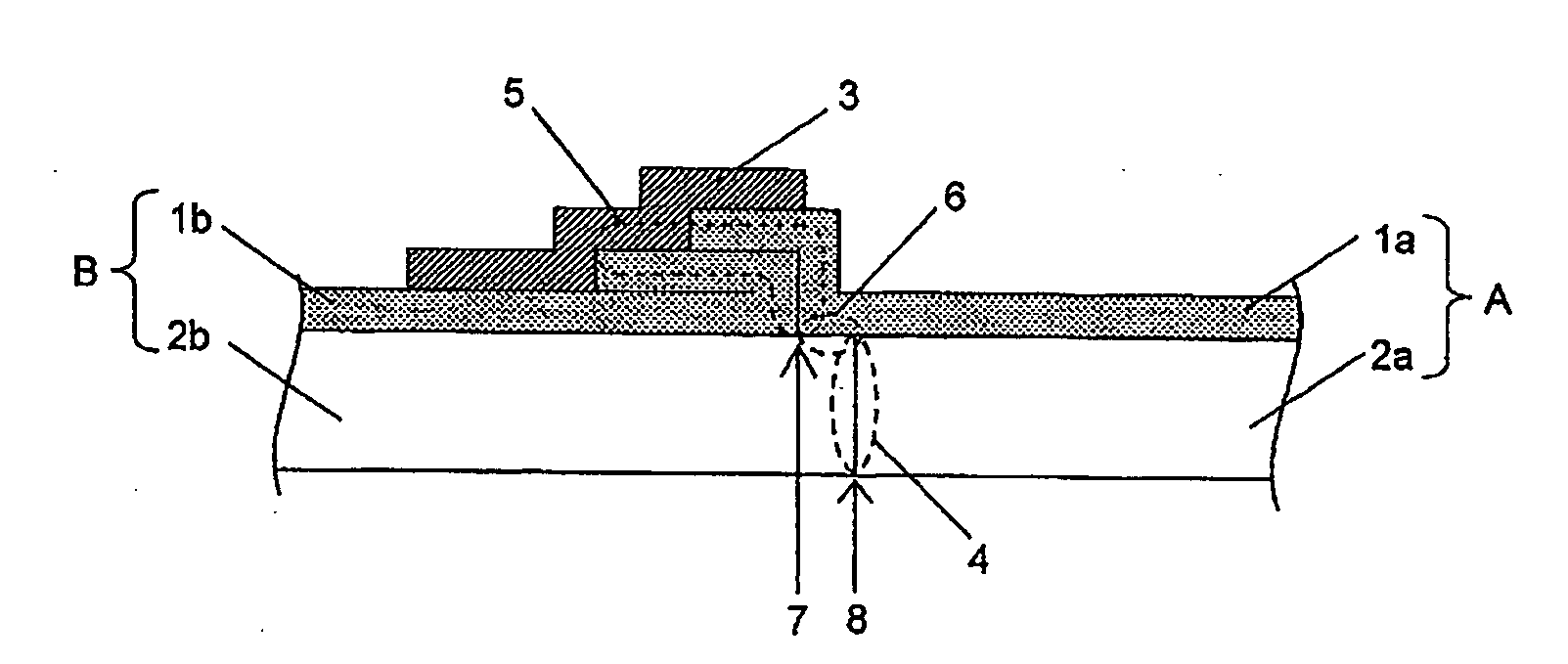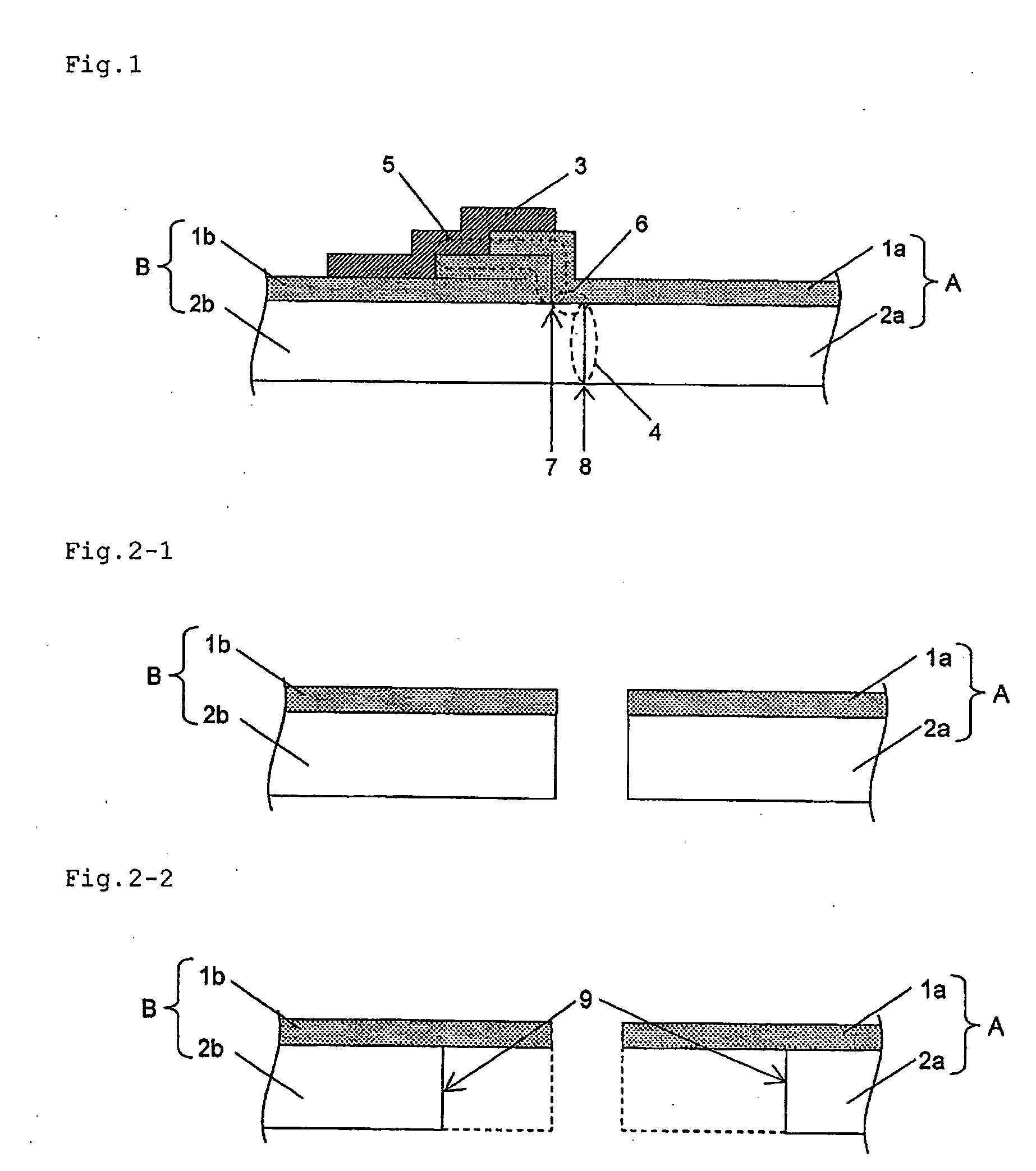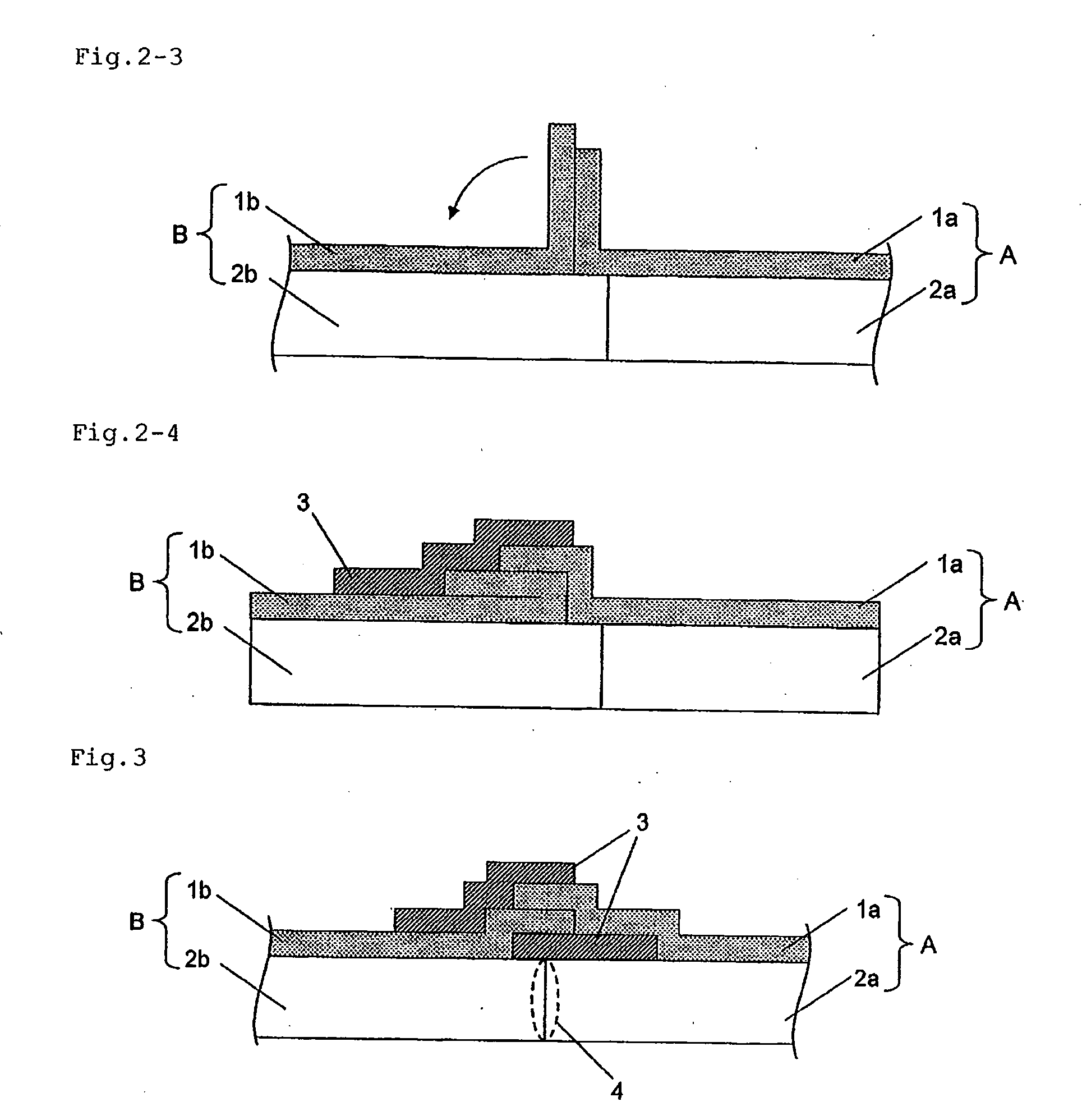Method for joining strips, structure of joint, and continous strip obtained by the method
a technology of pressure-sensitive adhesive tape and structure, applied in the direction of film/foil adhesives without carriers, photosensitive materials, instruments, etc., can solve the problems of reducing productivity, insufficient peeling workability, and continuous strip composed of strips joined, so as to achieve superior workability and productivity.
- Summary
- Abstract
- Description
- Claims
- Application Information
AI Technical Summary
Benefits of technology
Problems solved by technology
Method used
Image
Examples
example 1
[0087]Two double-sided acrylic foam adhesive tapes were joined by the method illustrated in FIGS. 2-1 to 2-4.
[0088]In the step in FIG. 2-2, the pressure-sensitive adhesive layer of one of the two tapes (strip B in FIG. 2-2) was not removed, and the pressure-sensitive adhesive layer of the other tape (strip A in FIG. 2-2) was cut and removed to a length of 15 mm from its end.
[0089]Next, with reference to FIG. 2-3, the pressure-sensitive adhesive layers were bonded by butting end cross-sections of the pressure-sensitive adhesive layers against each other. End regions of the release liners were brought at least partially into contact with each other so as to allow their sides having been faced the pressure-sensitive adhesive layers to face each other to form a superposed portion, so that the release liner 1a of the tape A lied on the pressure-sensitive adhesive layer 2b of the tape B by a length of 12 mm. In the front end region of the faced release liners, the tip of release liner 1b ...
example 2
[0093]Two double-sided acrylic foam adhesive tapes were joined by the method illustrated in FIG. 3. The pressure-sensitive adhesive layer of one of the two tapes (strip B in FIG. 3) was cut and removed from its end by a length of 5 mm, and the pressure-sensitive adhesive layer of the other tape (strip A in FIG. 3) was not removed.
[0094]Next, with reference to FIG. 3, the pressure-sensitive adhesive layers were bonded by butting their end cross-sections against each other. The release liners were superposed so that one release liner (1a) partially lied on the other release liner (1b) to form a superposed portion; the superposed portion was fixed by applying the same joint tape (20 mm long and 6 mm wide) as in Example 1 to the upper and lower sides of the superposed portion, to form a joint to thereby join the two double-sided acrylic foam adhesive tapes. The superposed portions of the release liners had a length of 5 mm.
[0095]Thus, a continuous double-sided acrylic foam adhesive tape...
PUM
| Property | Measurement | Unit |
|---|---|---|
| length | aaaaa | aaaaa |
| length | aaaaa | aaaaa |
| length | aaaaa | aaaaa |
Abstract
Description
Claims
Application Information
 Login to View More
Login to View More - R&D
- Intellectual Property
- Life Sciences
- Materials
- Tech Scout
- Unparalleled Data Quality
- Higher Quality Content
- 60% Fewer Hallucinations
Browse by: Latest US Patents, China's latest patents, Technical Efficacy Thesaurus, Application Domain, Technology Topic, Popular Technical Reports.
© 2025 PatSnap. All rights reserved.Legal|Privacy policy|Modern Slavery Act Transparency Statement|Sitemap|About US| Contact US: help@patsnap.com



